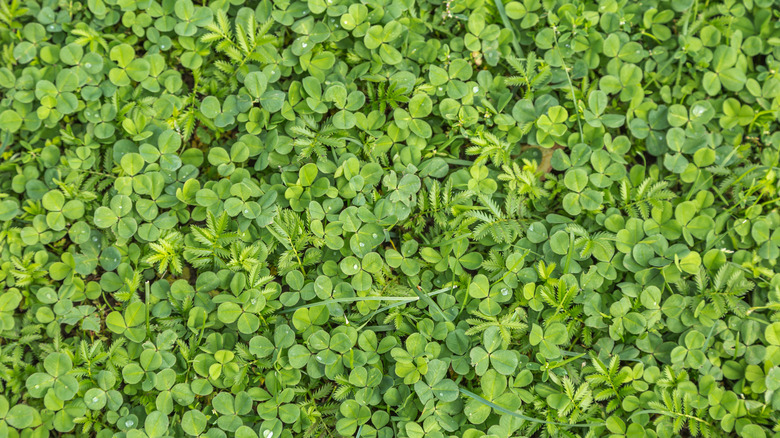The Low-Maintenance Ground Cover That Can Help Keep Weeds At Bay
Nobody enjoys spending their long summer days constantly weeding the garden. It often feels as if the pesky plants pop up every time you look the other way, and it can be really difficult to keep on top of it. Thankfully, there are some beautiful plants that will help prevent pesky weeds in the garden, and a lot of them are low-maintenance. One fantastic ground cover option that helps keep weeds at bay is microclover. Microclover is a small variety of white clover (Trifolium repens) that has fantastic benefits for your garden and the environment.
Microclover has smaller leaves and flowers when compared to white clover. As it does not clump as much as regular clover does, it allows you to get better coverage in your garden. Its less aggressive formation means that it mixes well with other plants, including turfgrass, and creates a uniform appearance. When it comes to weeds, microclover is competitive with unwanted plants and crowds them out.
Furthermore, this flower is great for soil health. It provides nitrogen to the soil, making it a natural fertilizer for lawns and grasses. Your local bees will also love you if you add microclover into your garden! These beautiful white flowers are a great source of food for bees, so you will see more of them buzzing around once your microclover has established itself.
How to grow microclover as ground cover
If you want to grow microclover in your garden, it is advisable to plant it between early spring and late summer. You may wish to mix your microclover seeds with other grasses or wildflowers to bring biodiversity into your garden. Before planting your seeds, think about the location you wish to cover. Although fairly hardy, microclover does not do well in areas with limited sunlight. Furthermore, it can be sensitive to drought and high levels of heat. Keep these factors in mind when deciding if microclover will thrive or if you need to consider alternative ground cover plants that are more suitable for your area.
When planting microclover, sow the seeds by hand into the soil, and then rake and aerate. When you are scattering your seeds, ensure that you are doing so densely to promote a good ground cover. In the first few weeks after sowing your microclover seeds, it is necessary to keep an eye on the soil. To germinate, microclover needs moisture, so keep watering the area until you see the shoots emerge. This will usually take seven to 10 days. Once established, the microclover will grow and spread to create a good ground cover.

